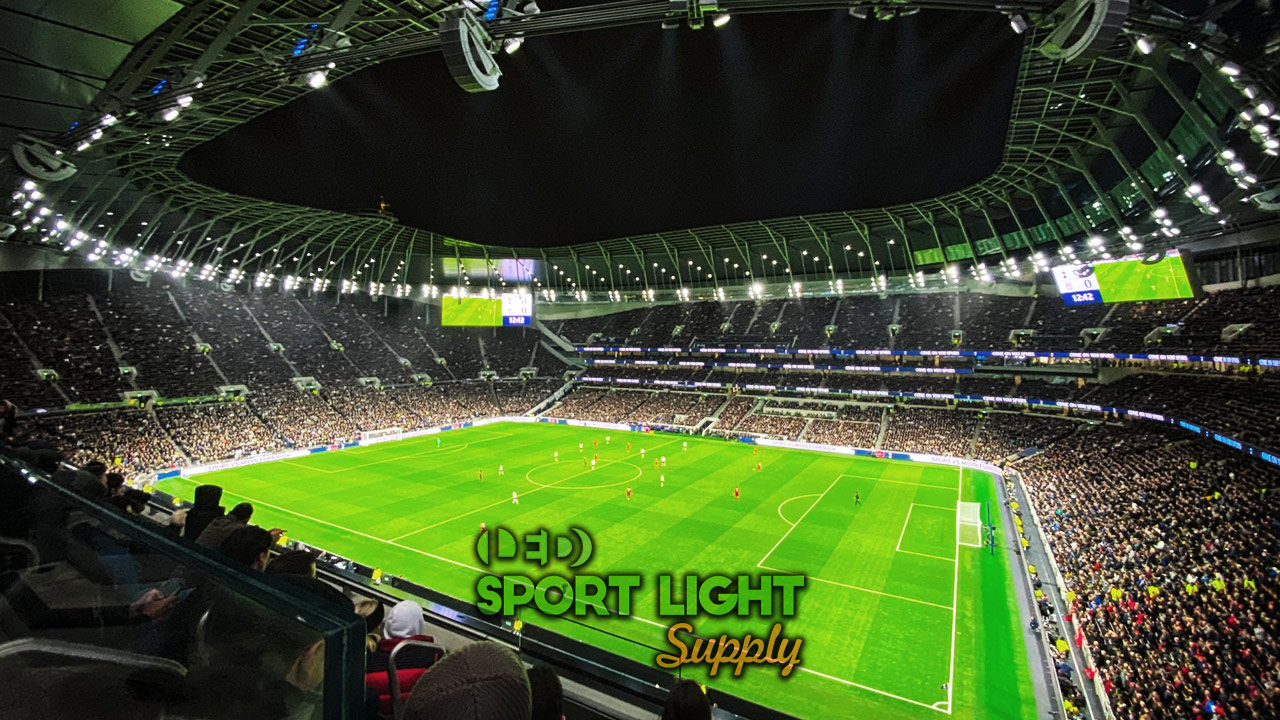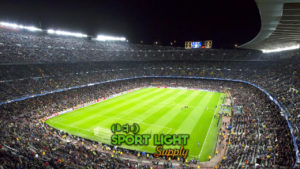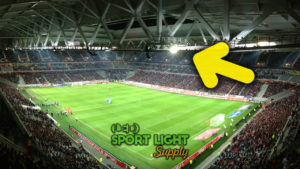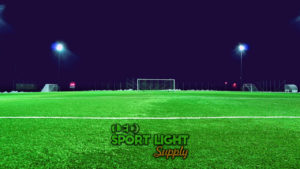This guide will help give you a good idea of how much lumen is needed for your soccer field or football field. Since each soccer field has different lighting requirements, each section gives a precise level of lumens that each field needs. You’ll also learn about select info that can lead to lumen loss due to reflection of light angles and how many pole positions are equally important. Since soccer field lighting isn’t just for the players, you can find out why field lighting serves a purpose for television and spectators
Factors affecting the lumens required for lighting a soccer field
1. Soccer field size
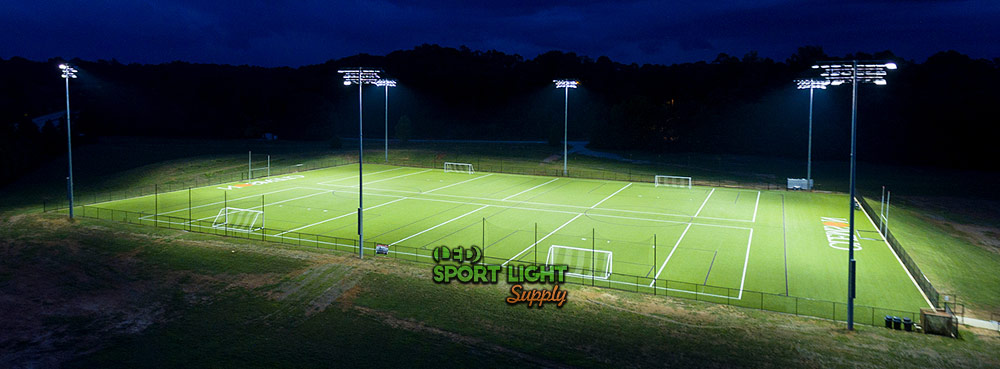
As you might have already guessed, not every soccer or football pitch is the same size. Each level must achieve the right amount of lumens. Soccer field size does change, so this is why more lumens need to cover areas that may otherwise not be uniform. There can be other issues of why more light is needed when the field is larger. In general, the larger the field and design of a field arena or stadium determine a lighting diagram.
This will then allow fields to be lit in the best way possible so that players benefit from the lighting.
2. Level of competition (Class I, II, III)
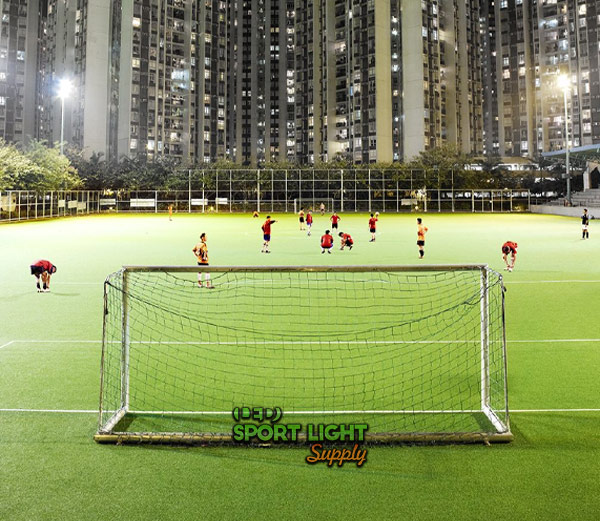 There are three levels of competition that apply to these classes. The top tier Class I is often given to the professional players of the soccer league. The second is considered semi-professional and college-level soccer players. When the third league is described, it applies to high school levels only. Each of these leagues has different sized fields and are all lit to the class they belong to.
There are three levels of competition that apply to these classes. The top tier Class I is often given to the professional players of the soccer league. The second is considered semi-professional and college-level soccer players. When the third league is described, it applies to high school levels only. Each of these leagues has different sized fields and are all lit to the class they belong to.
Only between the class I & II levels do we see any kind of difference in lighting. This tends to have more brightness and more suited for larger viewing audiences. It also applies to television broadcast where the light needs to be well-balanced.
3. Number of light poles
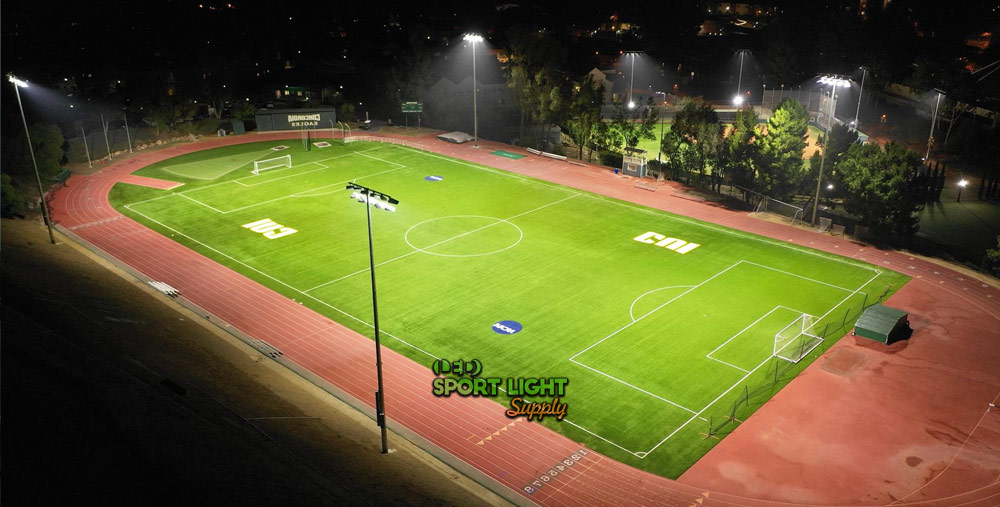
This is where the number of poles determines the output of light but it also determines the level of the profession. Smaller high school fields don’t need more than 4 poles but it’s not limited to only 4 as there can be 6 if needed. Professional fields have between 6 and 8 poles but also not excluding fill light that’s used. Poles placed at each corner of the field are pretty standard in any field, yet there can be more.
Adding poles in between the centerline will illuminate a field, making the entire playing area stronger and more uniform. But keep in mind that the larger the football field, the more lumens that are needed.
4. Light pole height
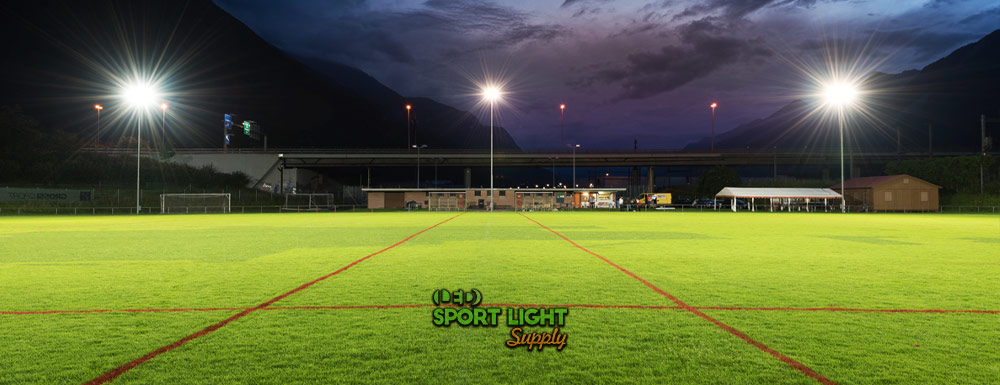
Big fields that are inside a stadium will need to be very tall pole masts that need large lights. The distance from the field itself is the biggest reason for needing more lumens to light-up a soccer field. This is called attenuation and is based on the distance light takes to reach its’ target. The longer the distance, the stronger the light needs to be. From these great heights and distance combined determines the output of lumen that needs to be adjusted.
Once these are factored, the amount of lumen then determines the amount of wattage that powers each light is reached.
5. Soccer field light pole layout
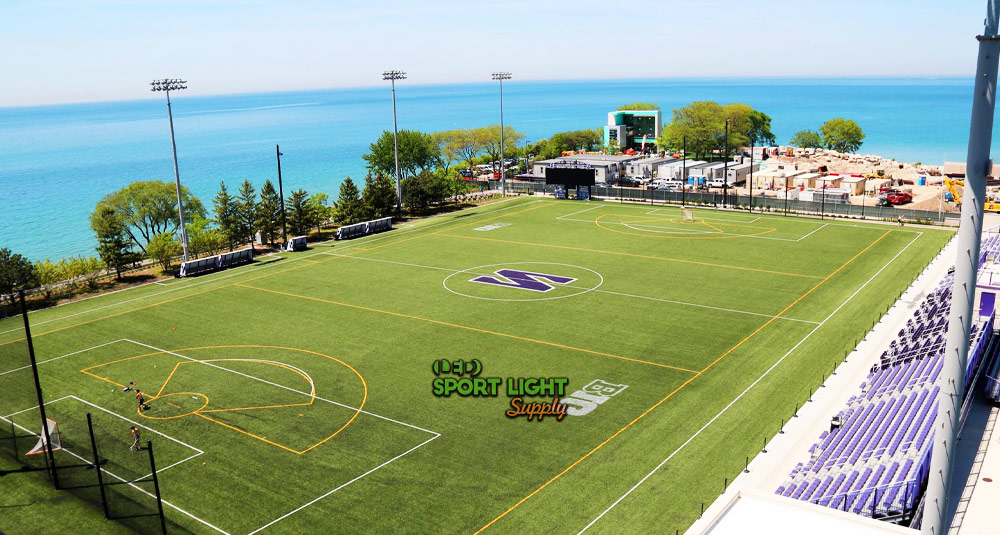
Every playing field will have platform seating so that spectators can watch. Even with high school fields, some bleachers allow an audience to watch games. These are placed at the sidelines of the field and will be an issue for lighting the field later. In an arena or stadium, these are factored by the building design. If the lights are placed outside the stadium they line up with the corners of the field.
Side pole lights are then added regardless of the seating. Usually, it’s the fields that have no building around it that will place centerline lights differently. They sit at each corner side of the bleachers of stands, often behind the back rows.
6. Beam angle of soccer lights
One of the big issues of soccer field lighting is that floodlights are hard to direct at an angle. These can have a light that leaks because of the reflectors and travels upward to the sky. This creates a problem that requires more light to be used to make up for lost lumens in soccer field. Unless the reflectors are well-made, high mast poles will have light leakage. No matter how well they are angled, light does leak by accident.
This can be controlled to some extent by adding extra light shields to reduce light flare. It also helps in removing glare that will be distracting to the spectators. Thankfully the use of LED lights has improved the directional output when the angle is considered.
How many lumens does it take to light a standard soccer or football field?
1. Training or recreation
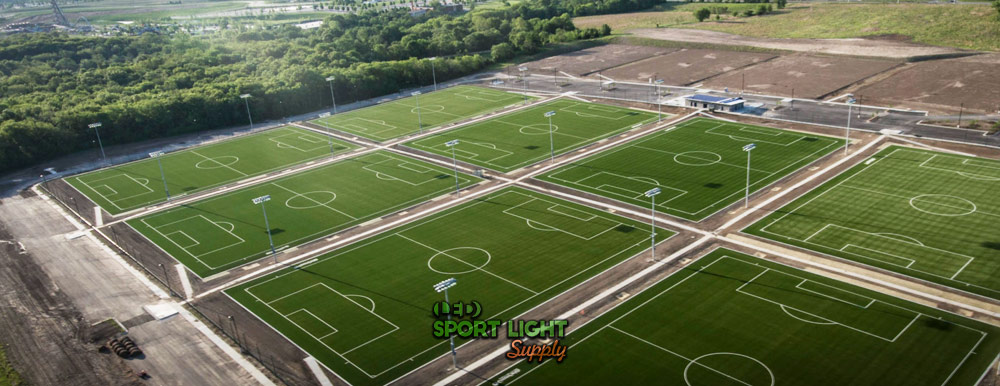
When it comes to simple training and recreational soccer play, football field lighting doesn’t need to be overbearing. You only need enough light to see the field and other players. Even if there are shadows from pole lighting, this is fine for amateur play for the most part. You see lighting like this in public parks or at high schools. It seldom needs to be complicated when it comes to this light level. The maximum amount of light you need for this kind of field is 200-300 Lux.
This light is considered comfortable enough for practice even for semi-professionals and isn’t too excitable. Soccer coaches prefer this level of light because there are fewer incidents of injuries. This would be bad for a team that relies on certain players who could be sidelined for a season because they got hurt.
Lux to lumen conversion of soccer field lights
It one thing to mention the amount of light used on a field when Lux is mentioned, so how many does it take to work? There is a conversion that happens when Lux is translated into lumens. Here is a basic example. If you take 200 Lux multiply this by 10,625 sq. meters, you’ll need at least 2,125,000 lumens to light a soccer field. This can be applied to any level used for the different kinds of playing fields. but it doesn’t end just there.
You still have to factor the amount of light loss through your pole lights. This isn’t a significant amount but the process is easy to determine. First, you take your lumen number and then use increments that add on lumens in stages. This starts with taking the lumen amount and multiplying it by 1.1 or 1.2 just in general. This turns into 2,337,500 lumens for 1.1 (adjusted) or 2,550,000 lumens for 1.2 (adjusted) in the soccer field.
If light soccer/football light poles are especially tall, this number would then be 2,762,500 lumens at 1.3 (adjustment). Needless to say that light loss may happen through high mast floodlights but field lighting Lux isn’t lost. After this, it’s a simple matter of dividing the number of lumens between poles. This is so each pole has a certain amount of lumens directed onto the field.
2. Regional competition, high school
Stepping-up the level a notch or two is where the competition is getting more active. The need for light on the field for high schools and local teams is enjoyed by semi-professionals for training too. Though it’s still way under the amount of light you’ll find in professional games, this light is generally very warm. This makes for friendly competition that still gets enough soccer pitch field lighting.
You might consider that this amount of light is soothing enough for practice gaming, but will still have an energetic appeal. Spectators can become just as energetic from soccer field lights that provide 500 to 700 Lux over the playing field, which is equivalent to 5,300,000 to 7,500,000 lumens. Its fine for local TV cameras, but it won’t look the same as high-end national soccer games images do.
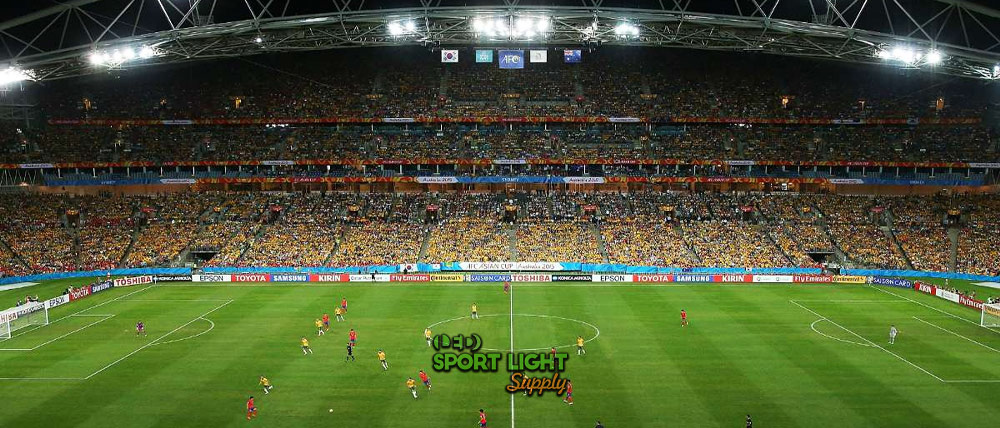
3. National or International competitions
When you reach this level of lighting, the amount of light in the field is very energetic. Both the players and fans are easily excited by this spectrum of light. It’s also the starting point that most stadiums have standards for lighting. The field is treated with more precise lighting in a diagram that is mathematically correct. Light levels are recorded over the entire surface to get light uniformity readings.
These are then analyzed and are given a rating for the clarity and level they represent. This is why many professional teams won’t play at certain stadiums if their lighting is under 750 to 1000 Lux, or the soccer/football field lights having 8,000,000 to 10,600,000 lumens! Even the color temperature has more brightness on the Kelvin chart making it much whiter like daylight.
4. FIFA World Cup standard and Broadcasting
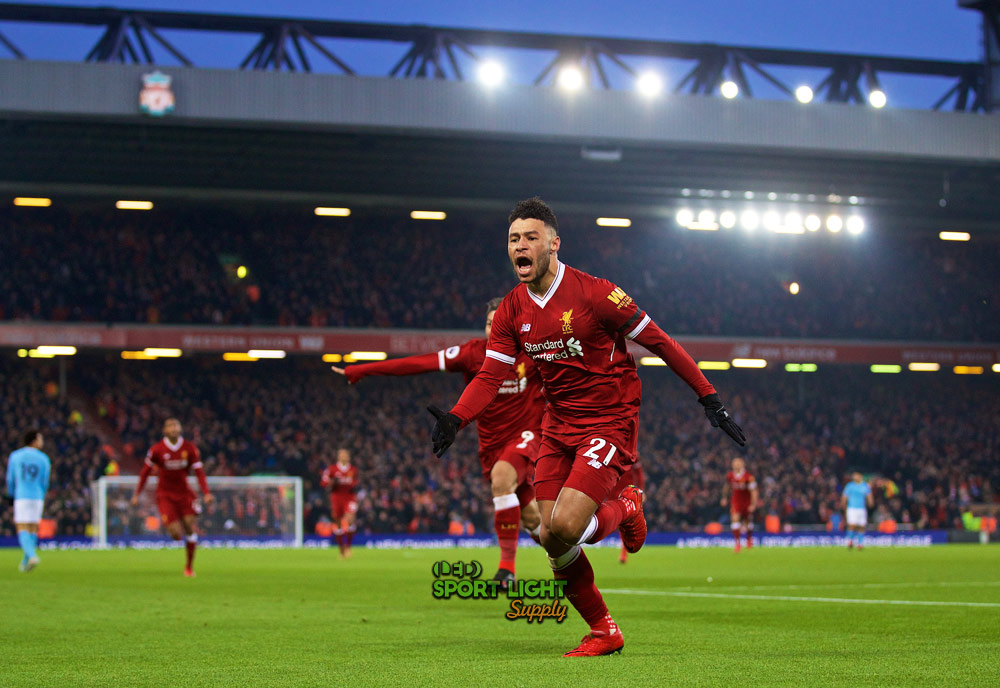
When the entire world is watching and is shown across the globe on television, this is the highest level expected. You see this kind of lighting in massive stadiums where the championship cup is played for FIFA games. Thousands and thousands of spectators cram into these super-stadiums to witness a soccer match that is filmed from every angle. It’s no wonder that you’ll see 1500 to 2500 Lux being used for these matches. If we do the lux to lumen conversion, we will need around 16,000,000 to 26,500,000 lumens to light a soccer field.
It’s also better for slow-motion cameras that catch and replay action that is crystal clear. This helps judges to see what happens on the field in a precise light. It’s also the most exciting amount of light that give players and spectators huge amounts of energy. This is why championship games are so loud and energy-packed.
How many wattages of LED light do we need to light a soccer field?
Each LED light is running from a specific amount of Watts that gives off the level of lumens. There is another formula that allows a simple conversion to determine the wattage that comes from lumens. This is always 150 lumens per watt and 2,125,000 lumens are needed so that becomes: 14,200 watts. But once again this is using the base formula, so it still needs to factor the lost light.
So using our adjusted numbers you would get 15,583 Watts for 1.1, and 17,000 Watts for 1.2 as adjustment. If the high pole lights are big stadium poles you have to consider their extreme height. So this would be 18,416 Watts adjusted at 1.3 for light loss. Now this tells you exactly the amount in watts that can be divided between light poles. Since the number of lumens and wattage is determined, all that left is the number of lights per pole.
These are then calculated by a sports lighting expert and you can then purchase your lights after that. It’s always best to pre-calculate the amount of light loss to prevent your field from having less lumen or Lux. Because each class is already determined, this makes it easier to adjust for lux to lumens, and lumens to watts.
Why do we need to have the right amount of lumens to light a soccer field?
1. Avoid wasting energy
The biggest mistake for putting up football field lights is simply not doing the correct math. Too much lumens lead to a field that is disproportionate to the field itself. It’s wasted light that will appear with too much brightness and wash-out details. It can also be annoying to players and spectators. Using these proven methods, you can only make for a better light that doesn’t waste electricity otherwise.
2. Create a better atmosphere for players and fans
You want to have a light that is also pleasing for the athletes and fans that come and watch the match. If the lumen is specific for the class of field it was meant for, then it will match the intensity of the atmosphere. This is why soccer field lighting has become more of a science over the last 50 years. It also relies on the professional level of how many sports lights it takes for better lights to have advanced in that time.
3. For photography
The newest cameras have all gone digital, and the amount of light needed for catching slow motion is more refined. LED lighting makes the smallest details visible so that instant replays show what is happening. Using the correct amount of lumens will give these high-end cameras the ability to see crisp detail that can be used for training purposes later. It also gives viewers a clearer view of how an athlete is performing under this professional lighting.
Related article: Sports lighting standard for broadcasting
Issues of inadequate soccer field lumens
1. Soccer field is too dim
Some of this can be blamed on not calculating the right amount of lumens needed for a field in general. It also can be from light loss due to improperly angled lights. It might be from buying the wrong Lux level needed and it makes field lights appear too weak for the players and spectators.
2. Too much light flare
If you buy the wrong type of lights that aren’t meant for soccer fields, the level of flare will be annoying for spectators and also for players. This will always lead to fixing the lights with attachments to reduce light flare but not 100%. Some floodlights that aren’t LED are angled to cover wide areas, while LEDs are very directional. This is why LED floodlights make field lighting more uniform.
3. There wasn’t a light loss adjustment beforehand
Risking the amount of light loss is never a good idea since the light loss will make a soccer pitch field appear less illuminated. Simply by adding an extra amount of lumen coverage gives the added buffer to ensure that a field is always going to have the exact amount needed. That includes the fact if there’s a light loss that happens naturally or not.
Conclusion
You can always consult your sport lighting sales reps to find out what is best for lighting your soccer or football field. When it comes down to getting the right amount of lumens, you always need to follow the simple steps to cover your lighting into simple numbers. This way, you’re never left without the proper level of light needed.

